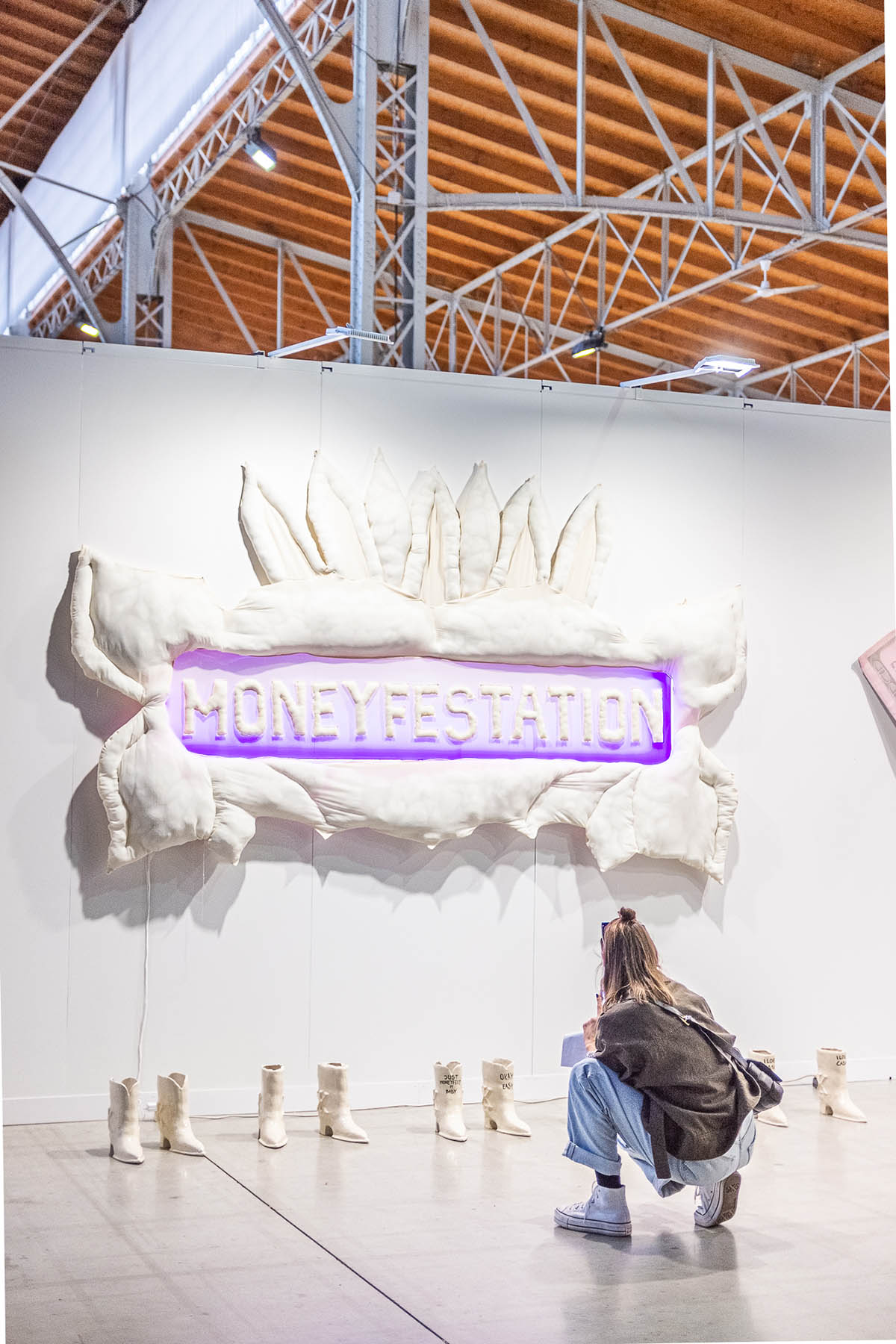
Die Positionen der Künstler:innen werden in gewohnter Weise in Solopräsentationen gezeigt. Die Messe bietet ein globales Spektrum zeitgenössischer Kunst, das von Malerei über Fotografie bis hin zu innovativen und interaktiven Mixed-Media-Installationen reicht. Ein vielseitiges Talk-Programmund der Familien-Sonntag am 23. März bereichern das abwechslungsreiche Messe-Angebot.
Die diesjährige Messe steht ganz im Zeichen des Dialogs zwischen Tradition und Zukunft, Künstler:innen und Publikum sowie Mensch und Technologie. Die künstlerischen Leiter Jan Gustav Fiedler und Walter Seidl wollen sowohl aufstrebenden Talenten als auch etablierten Künstler:innen eine Bühne bieten: „Unsere demokratische Ausstellungsstruktur mit jeweils gleich großen Standflächen für alle fördert nicht nur die Chancengleichheit, sondern gibt den Besucher:innen die Möglichkeit, sich intensiv mit den gezeigten Arbeiten auseinanderzusetzen.“

Internationale Galerien, unter anderem Nächst St. Stephan, Krinzinger, Lombardi-Kargl (Wien), Konrad Fischer (Berlin/Düsseldorf), Dirimart (Istanbul), 1 Mira Madrid (Madrid) oder Fonti (Neapel) präsentieren eine beeindruckende Auswahl an Künstler:innen: von etablierten Größen wie Lois Weinberger, einem Visionär, der mit seinen Werken die Grenzen zwischen Kunst, Natur und Gesellschaft verwischte, Sanja Iveković, einer Pionierin feministischer Kunst, und Gregor Schneider, Gewinner des Goldenen Löwen der 49. Kunstbiennale von Venedig, bis hin zu aufstrebenden Talenten wie Vera Klimentyeva, Lunita-July Dorn und Laura Killer, die hier erstmals die Chance haben, ihre innovativen Ansätze in einem derart prominenten Rahmen zu präsentieren und zukunftsweisende Akzente zu setzen.
DIGITALE INNOVATIONEN UND INTERAKTIVE ERLEBNISSE
Die SPARK Art Fair Vienna 2025 eröffnet auch neue Perspektiven, indem sie Kunst und Technologie nahtlos miteinander verbindet. Für ein kollektives Erlebnis sorgt dabei das Smartphone Orchestra, ein Projekt, das Smartphones in ein gemeinsames musikalisches Instrument verwandelt. Die Teilnehmer:innen werden eingeladen, mit ihren Geräten Teil eines beeindruckenden Klangkunstwerks zu werden.

PERFORMANCES UND DISKURSE IM GLOBE THEATER
Abseits der klassischen Ausstellungsflächen lädt das Programm im angrenzenden GLOBE Theater die Besucher:innen zum Diskurs. Hier finden während der Messetage Live-Performances, Videokunst und Diskussionsrunden statt. Künstler:innen, Kurator:innen und Kunstexpert:innen aus aller Welt debattieren über aktuelle Themen der zeitgenössischen Kunst, etwa die zunehmende Bedeutung von Künstlicher Intelligenz in der Kunstwelt. Das Talks-Programm im GLOBE Theater ist kostenlos zugänglich, was es einem breiten Publikum ermöglicht, an spannenden Debatten und Präsentationen teilzunehmen.

FAMILIENFREUNDLICHE KUNST: KINDERNACHMITTAG UND KREATIVWORKSHOPS
Die jüngsten Besucher:innen spricht die SPARK Art Fair gemeinsam mit ihrem Partner Uniqa am Familientag an:Beim Kindernachmittag am Sonntag gibt es interaktive Stationen, kreative Workshops und kindgerechte Führungen, die Kinder dazu anregen, selbst kreativ zu werden und Kunst aus neuen Perspektiven zu betrachten. Der Eintritt für Kinder bis 14 Jahre ist kostenlos, die Eltern zahlen für ein Tagesticket 14€ pro Person. So wird die Kunstmesse zu einem leistbaren Erlebnis für die ganze Familie und inspiriert die nächste Generation von Kunstliebhaber:innen.
BMW ART CAR: KUNST UND MOBILITÄT IM DIALOG
Ein Highlight setzt auch heuer wieder der Mobility Partner der SPARK, die BMW Group Niederlassung Wien, mit der Präsentation eines der berühmten Art Cars im Foyer der Messe. Seit 1975 sind in Zusammenarbeit mit renommierten internationalen Künstlern von Andy Warhol über Jeff Coons bis zu Roy Lichtenstein und Ernst Fuchs insgesamt 20 ikonische Modelle aus der Produktreihe des Autoherstellers geschaffen worden. Die BMW Group Niederlassung Wien begleitet bereits zum zweiten Mal die SPARK und unterstreicht damit die enge Verbindung zwischen Technologie, Innovation und zeitgenössischer Kunst. Ergänzt wird die Partnerschaft durch exklusive Side Events in Zusammenarbeit mit dem MAK, die neue Impulse zu Design, Innovation und kreativer Mobilität setzen.
TEILNEHMENDE GALERIEN
Die aktuelle Galerien-Liste findest du hier: Exhibitor List 2025
SPARK ART FAIR VIENNA 2025
Location: MARX HALLE / Karl-Farkas-Gasse 19, 1030 Wien
Eröffnung: 20. März 2025
Pressekonferenz: 10 Uhr Preview / 12–17 Uhr Vernissage / 17–20 Uhr
Messetage: 21.–23. März 2025
Öffnungszeiten: FR & SA 11–19 Uhr / SO 11-18 Uhr
SPARK Art Fair – www.spark-artfair.com




